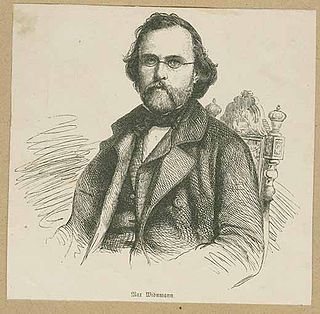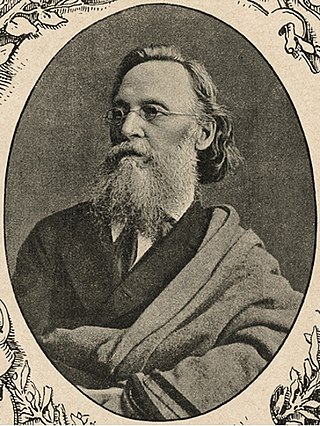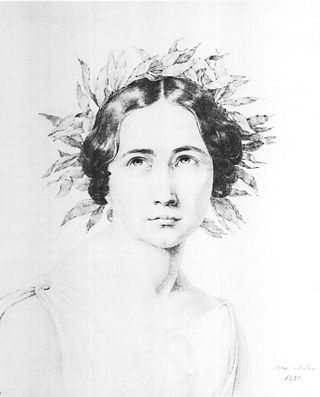This article needs additional citations for verification .(March 2020) |


Fritz Schider or Schieder (13 February 1846, Salzburg - 15 March 1907, Basel) was an Austrian painter, engraver and art teacher.
This article needs additional citations for verification .(March 2020) |


Fritz Schider or Schieder (13 February 1846, Salzburg - 15 March 1907, Basel) was an Austrian painter, engraver and art teacher.
He was born to a middle-class family of manufacturers. After completing his basic education, he entered the Bergakademie (Mining School) in Leoben. By 1865, he had decided to pursue a career as an artist and enrolled at the Academy of Fine Arts Vienna. There, he studied with Alexander von Wagner, Arthur von Ramberg and Wilhelm von Lindenschmit.
A year later, he accompanied his friend Hans Makart to Munich and entered Academy of Fine Arts there. [1] At that time, he came under the influence of Wilhelm Leibl and joined the artists' group known as the Leibl-Kreis . He was also an admirer of Theodor Alt and the early works of Albert von Keller. In 1877, he married Lina Kirchdorffer (1854–1927), one of Leibl's nieces.
In 1876, he accepted an offer from the "Gesellschaft für das Gute und Gemeinnützige" in Basel and became a teacher at the company's drawing and modeling school. His students there included Burkhard Mangold , Wilhelm Balmer, Max Buri, Numa Donzé and Carl Burckhardt . He was also employed by Julius Kollmann to help him with his Plastische Anatomie des menschlichen Körpers. Ein Handbuch für Künstler und Kunstfreunde (Anatomy for Artists). He later created his own large anatomy atlas, Plastisch-anatomische Studien für Akademien, Kunstgewerbeschulen und zum Selbstunterricht, which was published in installments from 1891 to 1894.
In 1885, he became a citizen of Basel. For his anatomical work with Kollmann, and independently, he was named an Honorary Doctor in the medical faculty at the University of Basel in 1896.

Wilhelm Maria Hubertus Leibl was a German realist painter of portraits and scenes of peasant life.

The Academy of Fine Arts, Munich is one of the oldest and most significant art academies in Germany. It is located in the Maxvorstadt district of Munich, in Bavaria, Germany.

The Prussian Academy of Arts was a state arts academy first established in Berlin, Brandenburg, in 1694/1696 by prince-elector Frederick III, in personal union Duke Frederick I of Prussia, and later king in Prussia.

Heinrich Altherr was a Swiss painter. He is best known for his murals in churches and various public buildings.

Fritz Cäsar Baumann was a Swiss painter who worked primarily in the Expressionist and Cubist styles. Preoccupation with caricature, textile and pottery, puppet theater and book illustration.

Max Alfred Buri was a Swiss painter. He specialized in portraits of the local peasantry and genre scenes.
Alfred Heinrich Pellegrini was a Swiss painter, illustrator and printmaker. Along with Heinrich Altherr, Paul Bodmer and Walter Clénin, he was one of the most prolific Swiss muralists of the first half of the twentieth century.

Bernhard Studer was a Swiss landscape painter.

The Munich school is a group of painters who worked in Munich or were trained at the Royal Academy of Fine Arts of Munich between 1850 and 1918. In the second half of the 19th century the Academy became one of the most important institutions in Europe for training artists and attracted students from across Europe and the United States.

Max von Widnmann was a German sculptor and professor at the Academy of Fine Arts in Munich. Many of his works were commissioned by King Ludwig I of Bavaria.

Rudolf Hirth du Frênes was a German painter.

Theodor Zacharias Friedrich Alt was a German painter.

Fritz Osswald was a Swiss painter, member of the Munich Secession and of the Darmstadt Artists' Colony.

Wilhelm Siegfried Kurt von Debschitz was a German painter, interior designer, craftsman, art teacher and founding director of an influential art school in Munich.

Wilhelm Dürr the Younger was a German painter and draughtsman, as well as a professor at the Academy of Fine Arts in Munich.

Emil Dill was a Swiss painter, watercolorist and art teacher.

Ludwig Schmid-Reutte was a Germany naturalist painter.

Alexander Strähuber or (Straehuber); (1814–1882) was an Austrian-born German history painter and book illustrator. From 1865 to 1882 he was a professor at the Royal Academy of Fine Arts in Munich.

Karl Michael Haider (1846–1912), was a Bavarian landscape and portrait painter.

Emilie Linder was a Swiss painter and art patron.